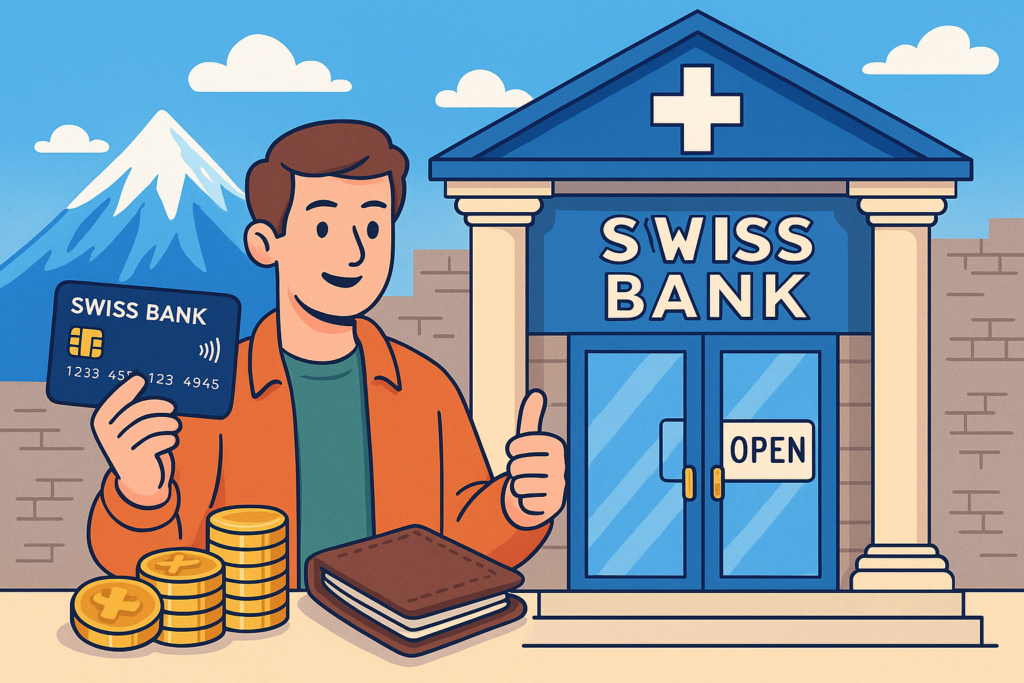Opening a Bank Account in Switzerland: A Practical, Real-Life Guide for Newcomers
New in Switzerland? A local bank account unlocks everything — salary, rent, health insurance, even mobile plans.
Below is a friendly, step-by-step guide with real examples and links to major Swiss banks so you can get set up without surprises.
Sofia (student, Italy) tried living on her foreign card for a week in Zurich. Her landlord, mobile provider and even sports club wanted a Swiss IBAN. She opened a local account and life got easier overnight.
Bottom line: pick a bank, prepare the docs, and you’ll usually have an IBAN and debit card within days.
1) Documents you’ll need
- Passport/ID
- Residence permit (B/C/L; a migration office approval letter can work temporarily)
- Swiss address proof (rental contract, registration letter, or utility bill)
- Employment or enrollment letter (for salary or student packages)
- Swiss mobile number for 2FA/SMS codes
2) Which bank? (traditional vs. digital)
Pick based on whether you value branch service or low fees. A common approach is to use one traditional bank for salary/rent and one digital bank for everyday spending.
- Traditional / cantonal: UBS, Raiffeisen, PostFinance, ZKB
- Digital app-first: neon, Zak, Yuh, Radicant
Compare packages and costs on moneyland.ch.
3) Opening: step-by-step
- Apply in-branch or via the app. If in branch, it helps to book an appointment in English.
- Verify identity by video call (app) or at the counter (branch).
- Upload/provide docs (permit/address). Some banks mail a code to confirm your address.
- Get your IBAN & debit card (card and PIN usually arrive by post within a few days).
- Activate e-banking + TWINT for payments and transfers.
4) Daily banking: eBill, QR-bills & TWINT
QR-bills are the Swiss standard: scan with your app and pay — no typing long references. Enable eBill to receive invoices directly inside e-banking (insurers, telecoms, etc.). And set up TWINT for peer-to-peer and shop payments.
5) Fees to expect (and how to reduce them)
Typical monthly account packages at traditional banks run ~CHF 5–15; digital banks are free or low-cost. Watch for ATM fees (other banks’ machines), foreign-currency markups on card payments, and transfer charges for international wires.
6) No permit yet? Options
Many banks prefer to finalize once your residence permit arrives. Some let you start onboarding with the migration approval letter and update the file later. If you’re non-resident, verify requirements and fees well in advance.
7) Security & tax forms
- Expect standard KYC/AML questions (purpose of account, source of funds).
- Complete CRS tax residency self-certification; US persons also submit FATCA (W-9/W-8).
- Keep your address, phone and permit details up to date to avoid access issues.
FAQs
Can I open fully online?
Yes at most banks via video identification; some still confirm your address by a postal code.
Which bank is “easiest” for newcomers?
PostFinance is very popular; neon/Yuh are fast and low-fee; UBS/ZKB offer broad services and branches.
How long until I get a card?
Commonly 3–10 business days by post (PIN separately).
Do I need a Swiss phone number?
Strongly recommended for 2FA and activation codes.
What’s the IBAN format?
Swiss IBANs start with CH — share it with your employer, landlord and insurers.
International transfers?
Compare FX and fees; sometimes non-bank services are cheaper.
Next steps
- Pick one bank from each list (e.g., UBS + neon) and compare fees.
- Gather documents into one folder (PDFs/photos).
- Open the account, activate TWINT and eBill, set standing orders (rent, insurance).
